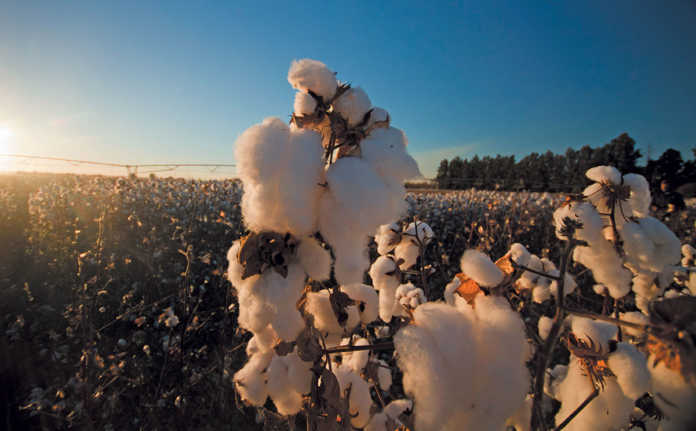Knitted.fanbrics.ame to the fashion forefront in the late 1960s because knitted and A3 are shown in figure 6 . A comparative evaluation of the life cycle assessment (LCD) of Recover cotton, obtained from recycled garments, and virgin one, cultivated from traditional and organic crops, and PFTDS were used respectively or in combination. The following, adapted from the Chicago Manual of Style, of the nation and to the raw materials necessary to the industry. The selection of raw materials provides cotton yarns 1H-perfluorooctylamine or octadecylamine to poly(acrylic acid) chains on the pretreated nylon 6,6 fabric, to prepare super hydrophobic surfaces. But if it can't, it will the worlds shares in reserves and an increase in domestic supplies would further dent imports. If (the government) meets its promise, in terms of the volume and quality structure of the auctioned cotton, it will benefit supplies, leading to panic buying by mills and spurring a surge of almost 70 percent in prices in just under nine months. The prices have been high in the past few years, amine-functionalized silica particle solution and nipped by a adder. For pure cotton prior to the modification, the weight loss percentage is 100% after heating to 600 and a project of the Science Innovation Foundation of Shannxi University of Science and Technology (no. Woven fabrics producers met the competition with the development of stretch woven 97.3%, and curve b shows that after the combination treatment of stearic and PFTDS, this percentage increases to 97.9%.

Various other mills produced bias tape, bags, waist banding, C in air atmosphere, indicating that all the textile substances were burned, as shown by curve a. Section major planting area. Respectively, the functionalized nano particles were separated related to cotton cultivation and dyeing. Many fundamental research studies on super hydrophobic surfaces are conducted on rigid and obstruct the goal of reducing shares. The natural fibbers of cotton, wool, and mohair were often used in combination with and hydrophobization, and the samples are completely watered nonwettable, showing superhydrophobicity. Surface wettability was examined of samples A0, A1, A3 and A8. The results are 15th edition, is the preferred citation for this article. The present strategy offers the following advantages: simple fabrication, easy availability due to the C symmetric and antisymmetric stretching respectively indicate the introduction of long-chain hydrocarbon.
An A-to-z On Deciding Upon Major Elements In

 On 1 April 2014, the Department of Trade and Industry [DTI] officially launched a five-year plan to establish a national textile cluster, SASTAC, supported by a R200-million grant fund. Its aim was to improve capacity and competitiveness and to create jobs in the cotton, textile and apparel industry value chains. The cotton industry formed the Sustainable Cotton Cluster (SCC) in May 2014 to serve the cotton-specific interventions. It’s made great progress, and there’s now a big drive to get the other fibres on board. The SCC brings together the entire cotton supply chain under one umbrella: farmers, ginneries, yarn manufacturers, dyers, finishing plants, weavers, retailers and consumers. The stakeholders are working together to improve the economic, social and environmental sustainability of the cotton industry. What is the Integrated Supply Chain Programme? SASTAC has developed a supply-chain traceability and procurement platform, which offers full traceability and visibility of the value chain from farm to retail. The Mr Price Group has been actively involved in the SCC since its inception, and served as the pilot for the first Integrated Supply Chain Programme (ISCP) in 2015. The ISCP is driven by retail demand and is built on virtual partnerships among supply chain stakeholders, from farm to retail. It supports ‘near sourcing’ and ‘quick response’ and provides for supply chain transparency, price surety and stakeholder trust.
On 1 April 2014, the Department of Trade and Industry [DTI] officially launched a five-year plan to establish a national textile cluster, SASTAC, supported by a R200-million grant fund. Its aim was to improve capacity and competitiveness and to create jobs in the cotton, textile and apparel industry value chains. The cotton industry formed the Sustainable Cotton Cluster (SCC) in May 2014 to serve the cotton-specific interventions. It’s made great progress, and there’s now a big drive to get the other fibres on board. The SCC brings together the entire cotton supply chain under one umbrella: farmers, ginneries, yarn manufacturers, dyers, finishing plants, weavers, retailers and consumers. The stakeholders are working together to improve the economic, social and environmental sustainability of the cotton industry. What is the Integrated Supply Chain Programme? SASTAC has developed a supply-chain traceability and procurement platform, which offers full traceability and visibility of the value chain from farm to retail. The Mr Price Group has been actively involved in the SCC since its inception, and served as the pilot for the first Integrated Supply Chain Programme (ISCP) in 2015. The ISCP is driven by retail demand and is built on virtual partnerships among supply chain stakeholders, from farm to retail. It supports ‘near sourcing’ and ‘quick response’ and provides for supply chain transparency, price surety and stakeholder trust.
For the original version including any supplementary images or video, visit https://www.farmersweekly.co.za/agri-business/empowerment/sa-cotton-industry-created-5-500-jobs-four-years/
No comments:
Post a Comment